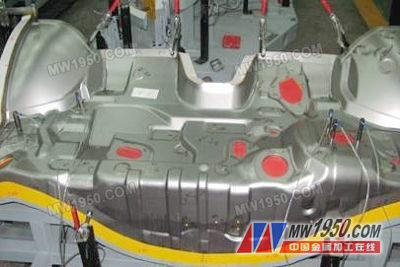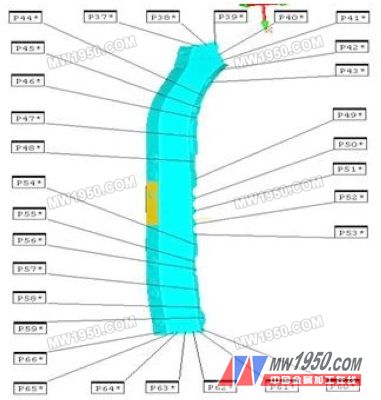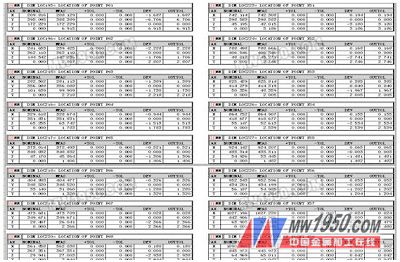Due to the ever-increasing requirements for lightweight design of automobiles, the proportion of high-strength steel plate materials to automobile bodies is increasing. High-strength steel can meet the requirements of collision strength under the premise of lightweight automobile. However, the rebound value of high-strength steel parts produced by general stamping method will be very large, and the shape of the parts after rebound will often not be within the error tolerance range. Not suitable for the actual application you need. This has made the impact of body parts rebound on the quality of the body more and more prominent.
Rebound in sheet metal forming is caused by the properties of the metal material itself and is inevitable. One of the countermeasures adopted in the production practice is to use the method of rebound compensation to make a rebound compensation amount on the stamping die to compensate for the rebound generated in the sheet forming. The amount of compensation is mainly based on the test data after the actual part is formed; it can also refer to the rebound value calculated by the numerical simulation software; or given by experience.
The test data after forming the part can be obtained by a variety of methods. Usually, the tool can be combined with the manual measurement method (Fig. 1). The coordinate measurement method can be combined with the three coordinates. (Fig. 2), or the white light measurement can be used with the inspection tool. Method (Figure 3).

figure 1
Partial three-coordinate detection point and its measured value


figure 2
This paper mainly deals with the method of the GSM (Global Shape Modeling) function of ThinkDesign software based on the above-mentioned actual part forming data and the practical experience of springback compensation. ThinkDesign has a lot of GSM functions, and we feel that two of them are enough for springback compensation.
The first is the "Advanced (M)" function, which is based on the original surface of the part before the springback deformation and a series of control point lines describing the springback compensation value; several matching dotted lines are also required. When applying this command operation, you only need to select the above design elements and related constraint command options to generate high quality deformed surfaces at one time. Of course, the series of controlled point lines and matching point lines are determined, and engineers with relevant experience are required.
Give a note. A car under the A-pillar reinforcement plate, the parts are stamped and formed by drawing, trimming and punching, and trimming and shaping. The material used is high-strength plate B340/590DP, and the material thickness is 1.2mm. This part has not been rebound compensation in the early stage. After the stamping and forming, the deviation of the detected size is large and the rebound warpage is serious. It can be seen from the following white light photogrammetry. The maximum dimensional deviation is up to 10mm. See the following figure.
Next page
Yongyue cryo vials are made of medical grade polypropylene (PP) and have no endotoxin. They are disposable laboratory consumables specially used for storing biological samples.
The anti-slip texture of the cap and body is easy to screw cap.
The tube cap has an O-ring built-in gasket to prevent liquid leakage.
The cryo tube is suitable for ultra-low temperature refrigerators, and the tolerance temperature is -86~121 °C, and it can be repeatedly frozen and thawed.
In the gaseous state of liquid nitrogen, it can withstand low temperature to -167 ℃.
According to different requirements, there are ordinary grade and PCR grade. PCR grade products are free of DNase, RNase, endotoxin and foreign DNA. Sterilized by gamma irradiation, sterile.
Cryo Vials,Cryovial 2ml,Cryotube 1.8 ml,Cryogenic Vials,0.5 ml Cryogenic Vials
Yong Yue Medical Technology(Kunshan) Co.,Ltd , https://www.yypcr.com